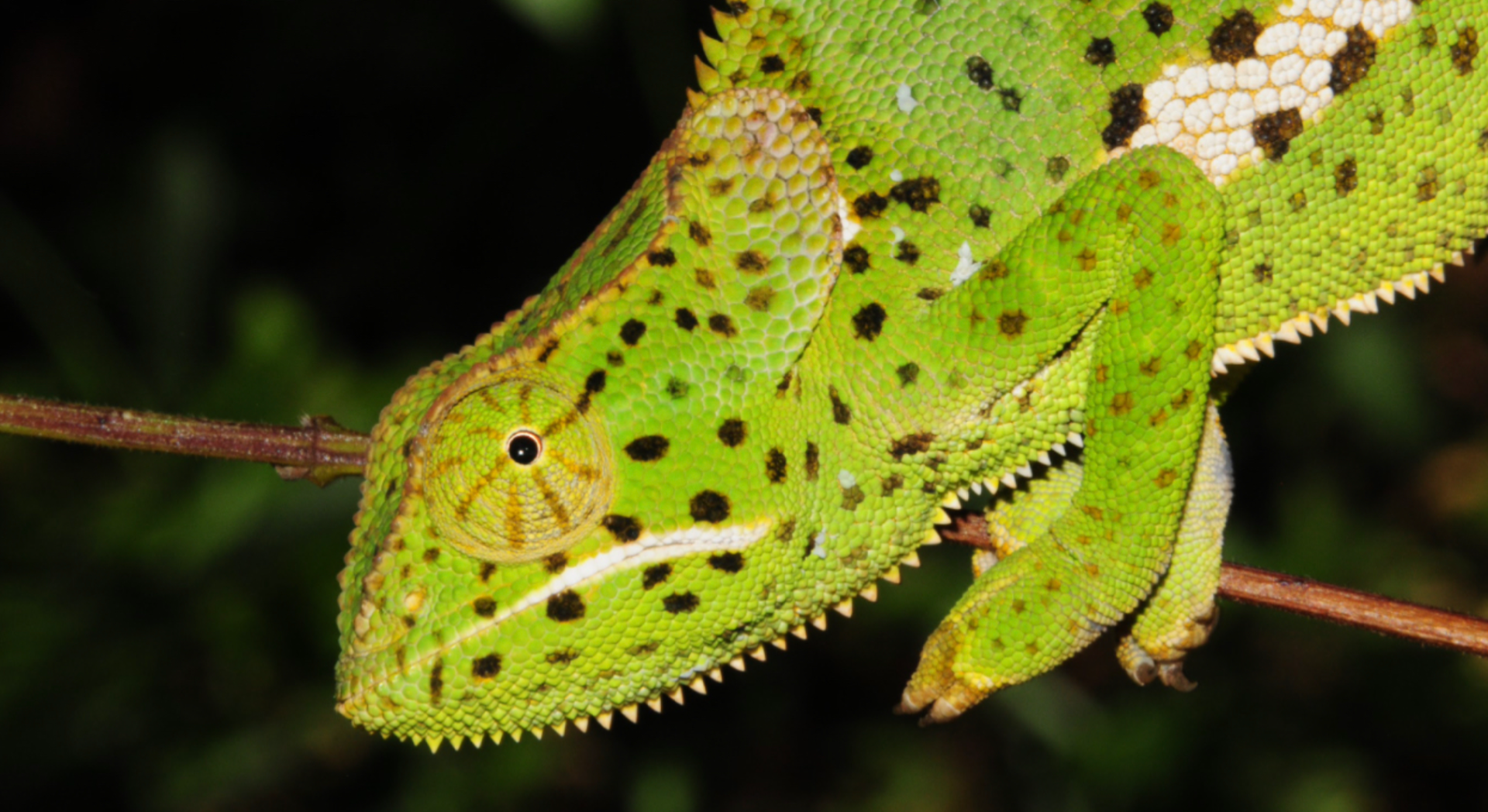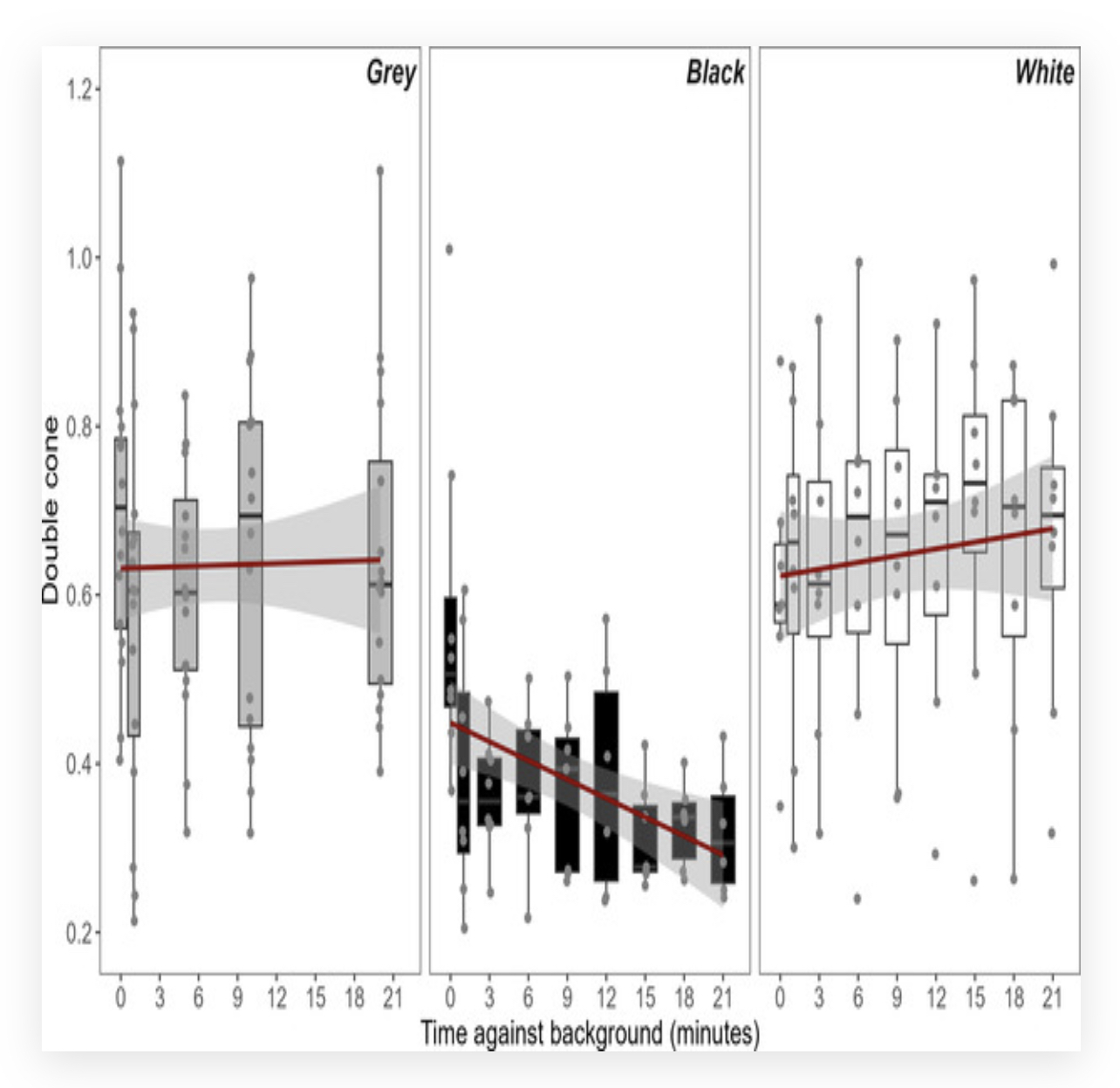Brilliance in Disguise: The Science Behind Chameleon Color Change

Popular belief has long held that chameleons possess a magical ability to instantly blend into any environment, adapting their appearance to match leaves, bark, or even patterns on manmade objects. Yet, in a groundbreaking study published in Biology Letters on August 6, 2025, a team of researchers—Tom Major, Alexia C. M. Hesten, Jan Stipala, Michael A. Cant, Martin Stevens, and Jolyon Troscianko—put this assumption under the microscope. Their work offers one of the most rigorous assessments to date of background matching in the flap-necked chameleon (Chamaeleo dilepis), a species widely distributed across sub-Saharan Africa.


Figure 1. Colour discrimination ('just noticeable difference') values between chameleon flanks and the background arenas over time, calculated from the avian visual model. Values of <1 would make the chameleon flank indistinguishable in colour from the background. Lines represent smoothed conditional means with 95% confidence intervals, created using linear models applied through the geom_smooth function in the ggplot2 R package. Box widths at 0 and 1 min were reduced to prevent overlap.
Figure 2. Double cone values of chameleon flanks over time when placed on either grey, black or white arenas, calculated from the avian visual model. Double cones mediate achromatic discrimination in birds, and a reduction or increase in the double cone value denotes the darkening and lightening of the subject, respectively [16]. Lines represent smoothed conditional means with 95% confidence intervals, created using linear models applied through the geom_smooth function in the ggplot2 R package. Box widths at 0 and 1 min were reduced to prevent overlap.
At the heart of this research is a deceptively simple question: do flap-necked chameleons actually change color to match their surroundings, or is this camouflage narrative more myth than reality? Using controlled experiments and visual modeling based on predator vision, the researchers placed chameleons against differently colored backgrounds—including black, yellow, and patterned surfaces—to measure how well their coloration blended in.
The results revealed a compelling story of adaptive finesse with clearly defined limits. Chameleons effectively adjusted their brightness to match dark environments, particularly black backgrounds, a strategy that significantly reduced visual contrast from the perspective of a predator. They also demonstrated modest success in matching certain hues, especially yellow. However, the complexity of patterned backgrounds proved too much for their physiological repertoire—fine-grained mimicry remained elusive. This finding undermines the myth of the chameleon as a flawless natural shapeshifter and replaces it with a more nuanced model of selective color and brightness matching.
Hue Matching
Chameleons demonstrate modest success in matching certain hues, especially yellow, to their surroundings. This ability is not universal and is influenced by the specific background and lighting conditions. While they can adjust their coloration to align with some hues, the process is not instantaneous or flawless. The study highlights that hue matching is a selective and context-dependent strategy rather than a general capability.
Luminance Matching
Chameleons effectively adjust their brightness to blend into dark environments, such as black backgrounds, reducing visual contrast for predators. This adjustment is particularly effective in low-light conditions, where brightness plays a critical role in concealment. The ability to modulate luminance is a key survival mechanism, allowing chameleons to evade detection by predators that rely on visual contrast. However, this strategy has its limitations and is most effective in specific scenarios.
Pattern Matching
Chameleons struggle to mimic complex patterns, as their physiological capabilities do not allow for fine-grained mimicry. The study reveals that while they can achieve some level of background matching, their ability to replicate intricate patterns is limited. This limitation underscores the selective nature of their camouflage, which is more about blending in broadly rather than achieving perfect mimicry. The findings challenge the myth of chameleons as flawless natural shapeshifters, presenting a more nuanced understanding of their adaptive strategies.
The physiological mechanisms behind these transformations are equally fascinating. Chameleons rely on two primary modes of color change. The fast, short-term changes are physiological, involving pigment redistribution within chromatophores—specialized skin cells that regulate coloration. These rapid adjustments occur in response to environmental stimuli or behavioral triggers. The slower and more sustained shifts are morphological, involving alterations in the structure and distribution of chromatophores across the skin over time. These mechanisms are deeply entwined with other survival functions such as thermoregulation—where darker colors absorb more heat—and social signaling, allowing individuals to express dominance, submission, and reproductive readiness through color.
What makes this study truly significant is its ecological framing. The authors argue convincingly that while camouflage may not be the primary driver of color change in chameleons, it is nonetheless a functional and adaptive response that contributes to the animal's ability to evade detection. The myth of universal camouflage gives way to a more scientifically grounded understanding: color change in Chamaeleo dilepis is a multifunctional strategy, shaped by a complex interplay of behavioral, environmental, and physiological factors.
Rather than being biological magicians, flap-necked chameleons are strategic color tacticians. Their brilliance lies not in perfection but in flexibility—a survival strategy that balances concealment with communication, temperature control, and the constraints of their physiology.
Original Source: Major, T., Hesten, A. C. M., Stipala, J., Cant, M. A., Stevens, M., & Troscianko, J. (2025). Flap-necked chameleons change colour to match their background. Biology Letters, 21(8). https://doi.org/10.1098/rsbl.2025.0134
Recommended articles
- Genetic and behavioural factors affecting interpopulation colour pattern variation in two congeneric chameleon speciesTammy Keren-Rotem, Royal Society Open Science, 2024
- Chameleons communicate with complex colour changes during contests: different body regions convey different information Russell A. Ligon, Biology Letters, 2013
- The contextual separation of lateral white line patterns in chameleons Tammy Keren-Rotem, Royal Society Open Science, 2018
- Camouflage, communication and thermoregulation: lessons from colour changing organisms Devi Stuart-Fox, Philosophical Transactions B, 2008